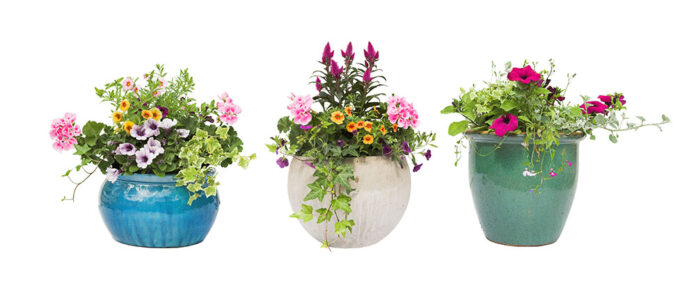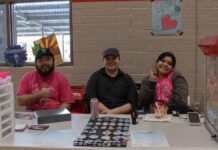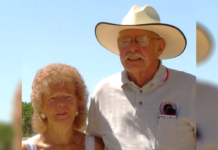

By Wende Gehrt
Gardening in containers, or hot pots, can be a great deal of fun and affords the gardener accessibility, opportunities for creativity, and relative ease in terms of daily chores. The challenges include lack of moisture and susceptibility to hot and cold temperatures and should be considered when determining placement of the container.
Containers are available in a variety of materials including terra-cotta, plastic, ceramic, metal, fiberglass, wood, stone and concrete. Of course, you may choose any whimsical container you desire.
Plants may grab the attention, but good-looking plants begin with healthy planting medium. A good potting mix will contain organic material and air but rarely contain any real soil. They’re available in a variety of brands and sold in pre-packaged mixes. Avoid garden soil as it’s too dense and lacks organic material. If the container is quite large or deep, crumpled plastic water bottles or bubble wrap may be used to fill space before adding the potting mix. The plant’s roots will only grow to a depth of about 12 inches, so filling a deep container with potting mix only adds to the cost and weight.
When selecting plants for hot pots, be sure to choose plants that have similar light and water requirements. Think in terms of “thriller,” “filler” and “spiller” when choosing plants.
A thriller is a tall plant placed in the back of the pot such as dracaena, yucca or lavender.
The filler is the main focal flowering plant, and chrysanthemums, salvias, nasturtiums, petunias and zinnias are all good choices.
The spiller could be a vine or creeper such as marguerite, ivy or elephant food.
With the kaleidoscope of colors available, you can choose whatever color arrangement you like. Think of the color wheel and use either contrasting colors, complementary colors or whatever appeals to you. The addition of white flowers makes the other colors “pop.” Even herbs including rosemary, basil, dill, chives and thyme can be incorporated in a container.
To attract butterflies, choose blue mist flower, lantana or desert milkweed. Hummingbirds are attracted to autumn sage, scarlet creeper and velvet honeysuckle. To attract birds, select ocotillo, hesperaloe or southwest coral bean. If you prefer cacti and succulent plants, keep them together to avoid overwatering or feeding. Succulents and cacti do need water, but only when the soil is very dry.
Watering and feeding will be determined by the type of container, variety of plants and location. You may choose to add a line to a drip irrigation system or water by hand. Fertilizer choices include granular, soluble crystals or pelleted and include the three nutrients – nitrogen (N), phosphorus (P) and potassium (K). Follow the directions on the package for application and frequency.
Container gardening in Arizona is not only fun, but also can be enjoyed year-round. Express your creativity with your container and plants.
[email protected]
520-374-6263
Wende Gehrt is the newest member of Maricopa Master Gardeners.
This column appears in the October issue of InMaricopa.












![Alleged car thief released without charges Phoenix police stop a stolen vehicle on April 20, 2024. [Facebook]](https://www.inmaricopa.com/wp-content/uploads/2024/04/IMG_5040-218x150.jpg)

![MHS G.O.A.T. a ‘rookie sleeper’ in NFL draft Arizona Wildcats wide receiver Jacob Cowing speaks to the press after a practice Aug. 11, 2023. [Bryan Mordt]](https://www.inmaricopa.com/wp-content/uploads/2024/04/cowing-overlay-3-100x70.png)


